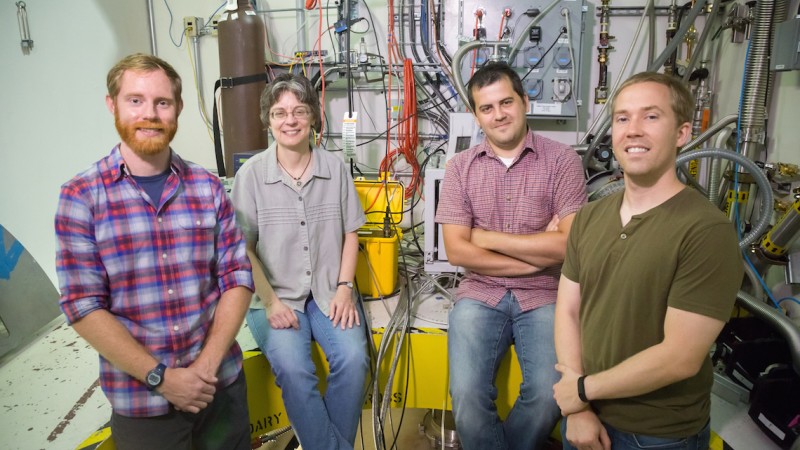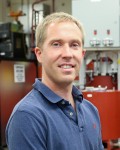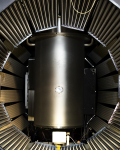When he looked at the proposal, John Carruth immediately realized the experiment for the Spallation Neutron Source's NOMAD instrument was going to require some extra review.
The user's experiment involved irradiating compounds containing technetium-99, a highly radioactive isotope, for analysis. Tc-99 is a beta emitter that had the potential to present a hazard to the instrument crew if not handled properly.
John was also aware of previous events in his field of science. Several years ago at another facility, operators lost track of a similar sample containing Tc-99, resulting in the unmarked sample being inadvertently opened, spreading contamination in the facility and even offsite. The result was a costly cleanup.
For this experiment, John, science support team member Joan Siewenie and instrument scientist Mikhail Feygenson began the typical two-step proposal review process, first to determine the scientific feasibility and then to consider the instrument’s capability and any operational issues that might occur.
Experiments that pose special challenges are flagged for more scrutiny, and this was one of them. John consulted the SNS health physicist. They determined due to its dispersible nature and potential for contamination the experiment should be reviewed by the SNS instrument safety committee.
Sample packing and shipping received particular coordination, led by lab technician Nathan Helton. The samples were placed in tightly sealed containers at the user’s facility that could be directly exposed to NOMAD's beam without opening. The sealed containers were shipped in a secondary container. The team worked with subject-matter experts to create a job hazard analysis of the process.
"Radiological control technician Jim Treen and Nathan did a superb job of expertly unpacking, checking in, and repacking the samples in preparation for the experiment, despite the increased scrutiny associated with these samples," John says.
Delivery of the sample was scheduled to arrive on a weekday and just over a week before the experiment. This was to give the user and NOMAD team plenty of time to make sure all the protocols were being followed.
The experiment began on time, and the users were able to collect the data they needed. They are now preparing a manuscript for publication.
"The project went so well, we're expecting to get similar experiments based on the experience we've gained from this one," John says.
The NOMAD science support team's diligence in making sure the user's experiment went without incident underscores several of the points in Battelle's Safe Conduct of Research: Everyone is responsible for ensuring safe operations, leaders value the safety legacy, and cutting-edge science requires cutting edge safety.








